If you don’t know, homemade turkey gravy recipe is where it’s at boos. Made with fresh turkey drippings, savory stock, and aromatic herbs, we create a turkey gravy from scratch that’s rich, velvety, decadent and anything but boring y’all. Serve this at any holiday feast and get your whole life.
This post may contain affiliate links. Read our disclosure policy.
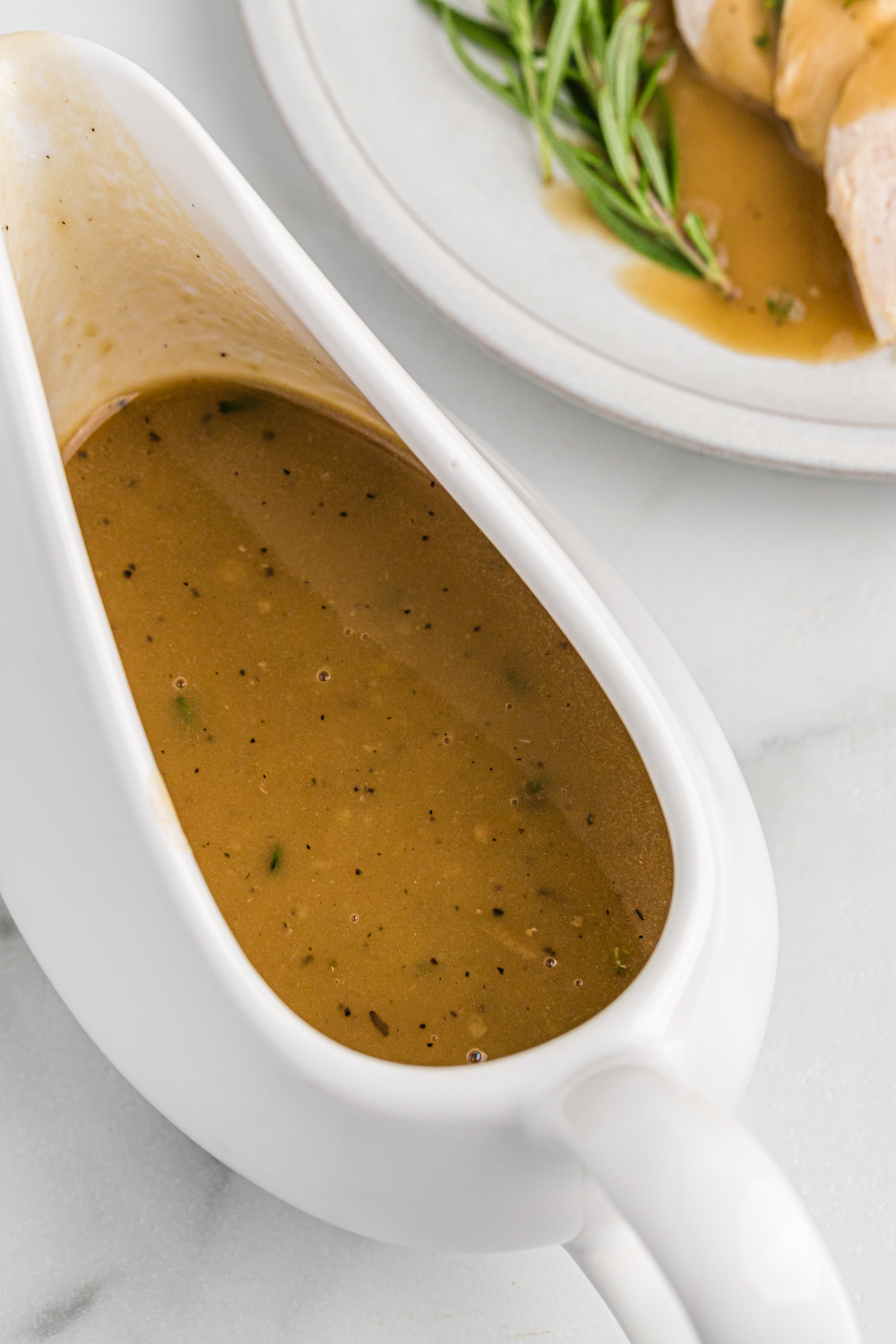
Want to Save This Recipe, Boo?

They’re Lovin’ It! Here’s what They’re Sayin’:
“This really is the best turkey gravy!”
—JESS
Making a turkey gravy recipe from scratch is literally one of the best ways to take your holiday meals to new heights. It’s got so much depth and complexity. And the real kicker is, it ain’t hard to make at all.
We start by making a roux with flour and drippings, then mixing in stock and seasonings to build the flavor. You cook it low and slow while you sit back and take in the cozy smells that fill your house, ya dig?
The Lowdown of the Best Turkey Gravy Recipe

Cuisine Inspiration: Classic Holiday Vibes
Primary Cooking Method: Simmering
Dietary Info: Can be made dairy-free or gluten-free with ingredient swaps
Key Flavor: Savory, Rich, Indulgent and Smooth
Skill Level: Easy y’all (No Sweat fam!)
No-Fuss Y’all
We only use simple ingredients and minimal prep to pull off a maxed out flavored turkey gravy. It ain’t hard boos. You can do this!
Flavor on Flavor
Folks at your holiday table won’t believe you didn’t grab a container of this from a restaurant because it legit tastes restaurant-worthy. It’s got that perfect balance of savory notes while being thickened to perfection.
So Versatile
Whether you serve it classic or jazz it up with your unique twist, it is a straight up comforting hit.
Ingredients You’ll Need to Make the Best Turkey Gravy Recipe

- Turkey Drippings: This is our flavor foundation adding in all the turkey essence you worked so hard on making.
- All-Purpose Flour: We use this to make a roux that will perfectly thicken the sauce while also deepening the flavors.
- Turkey stock: If you can grab homemade, do it. It will add so much nuance to your sauce. But if you are in a pinch, store-bought is beyond fine. Either way, the stock will thin your sauce into something luscious and smooth.
- Unsalted Butter: We keep the salt down but we adjust up the rihcness by adding rich.
- Salt & Pepper: We gotta add just a little extra flavor to the mix and this will do it. Add as much as you need here. Do you boos!
- Herbs (Rosemary, Thyme): If you wanna really amp up the flavors in this, I add this as an optional vibe but feel free to add in some rosemary and thyme to give off some cozy earthy notes to the mix.
How to Make Turkey Gravy
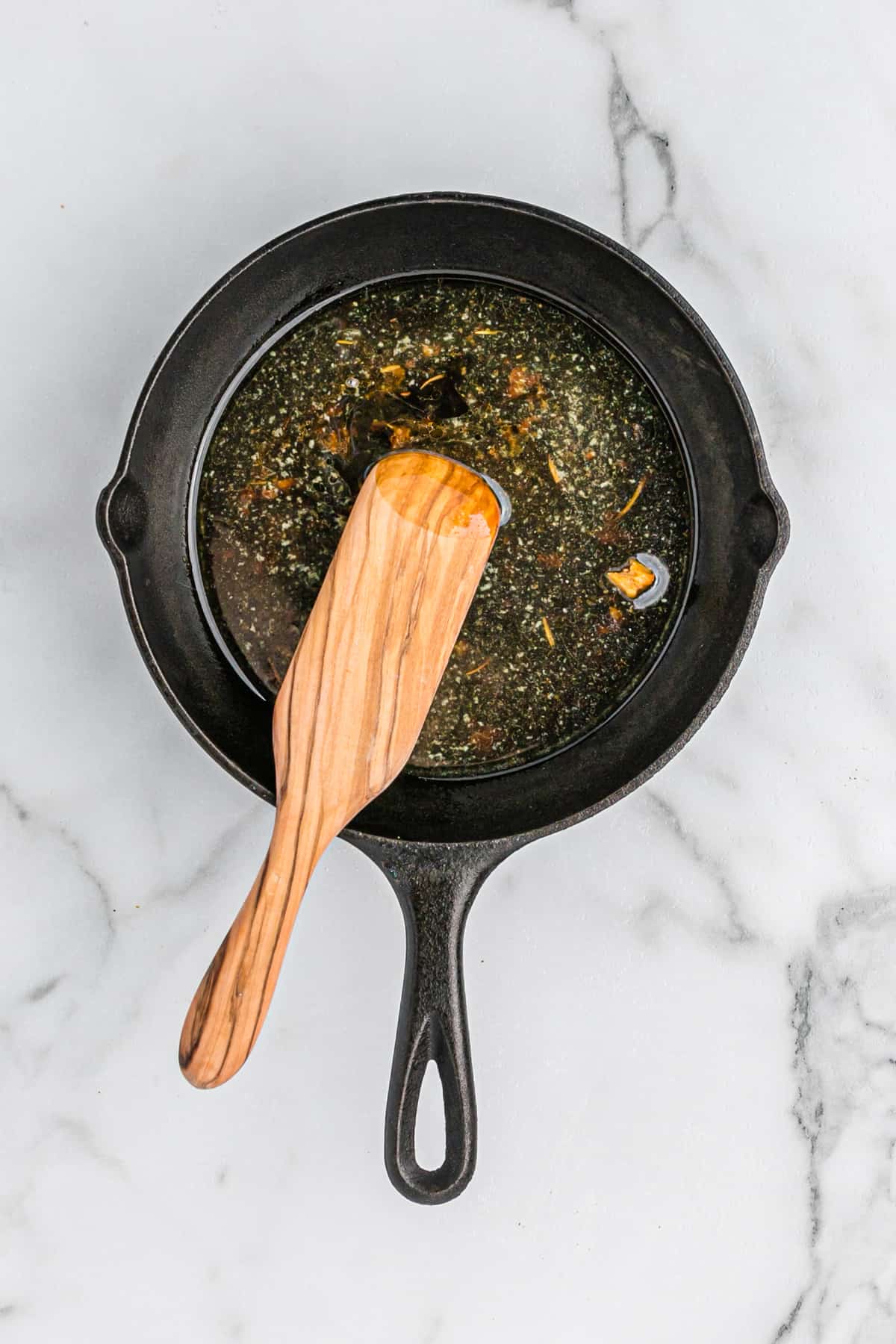
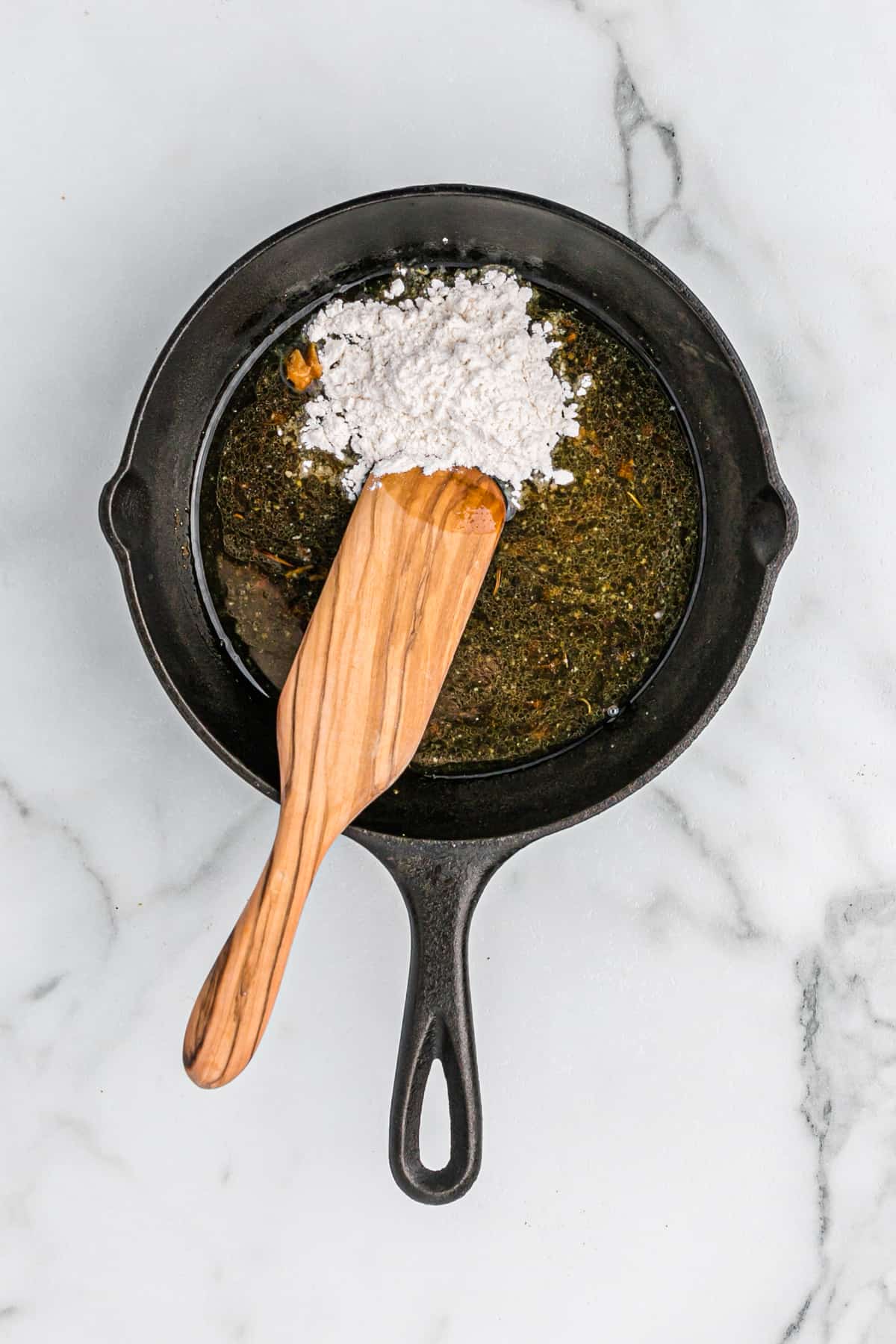
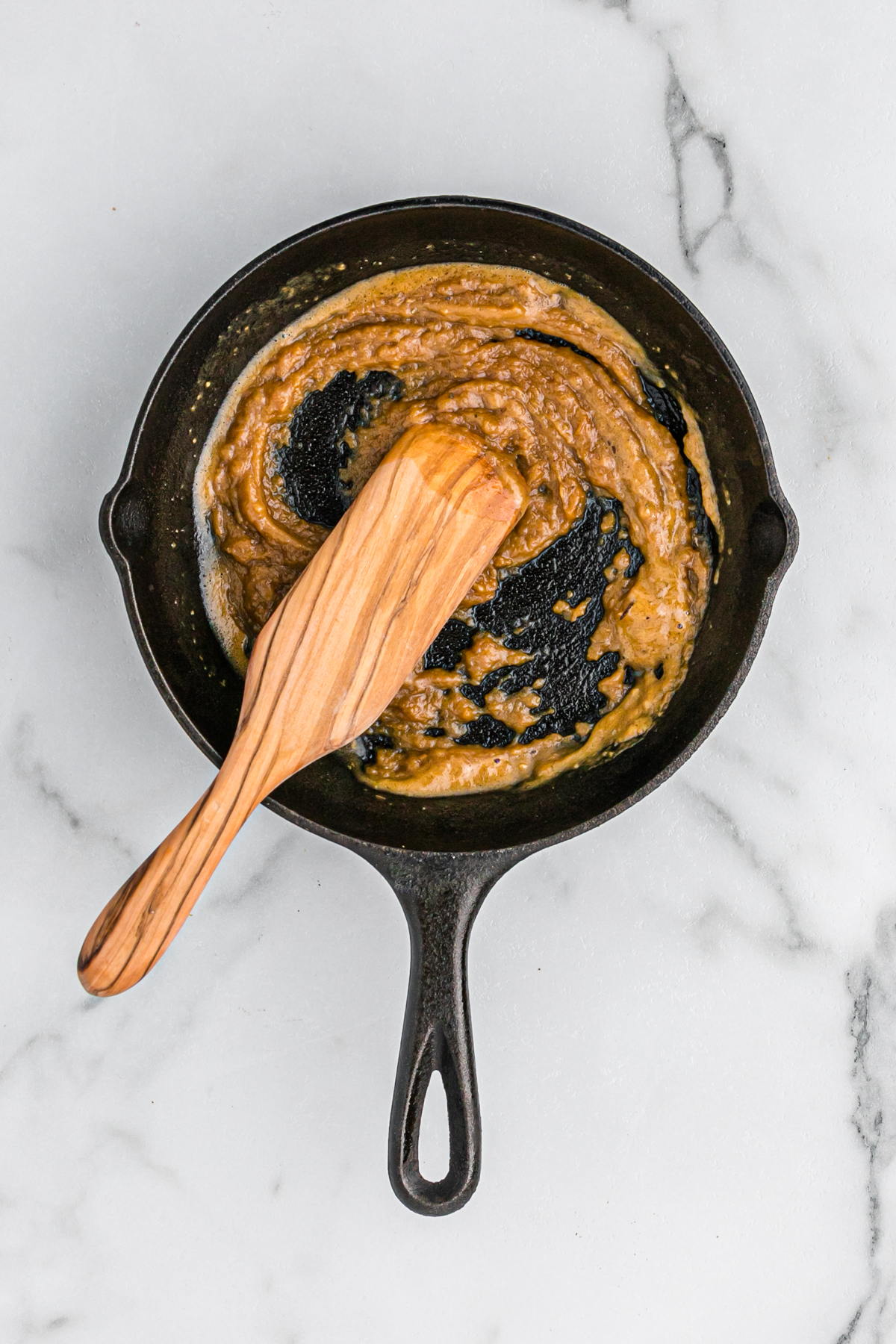
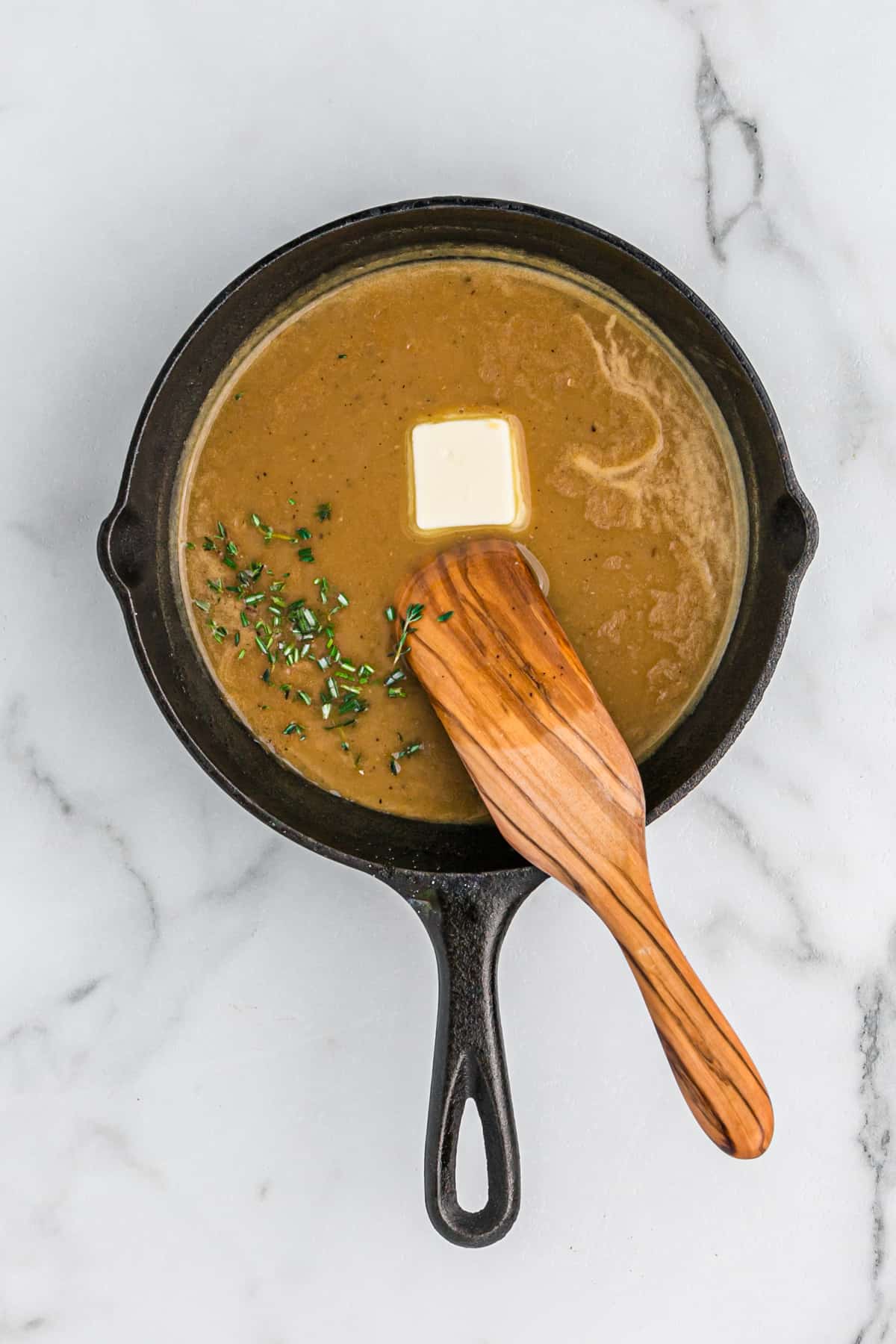

How to Serve Gravy from Turkey Drippings
- Over Mashed Potatoes: This gravy is the best thing ever over some comforting garlic mashed potatoes, slow cooker mashed potatoes, or cream cheese mashed potatoes.
- Easy Holiday Supper: Instead of a whole turkey, keep it low-key with baked turkey wings, oyster dressing, green bean casserole and honey butter biscuits.
- Sunday Supper: Get into this chicken fried steak, a unique mashed sweet potatoes, along with some classic rice, black-eyed peas and turnip greens.
Recipe Substitutions
- Turkey Drippings: Swap in an equal portion of butter or oil for your fat component if you don’t have drippings around.
- Turkey Stock: Use homemade chicken stock or grab some from the grocery store.
- Unsalted Butter: Use salted butter if that’s all you have around. Just leave out any additional salt since you have some in your stock and drippings already.
Recipe Variations
- Add Mushrooms: You can make this recipe heartier with the addition of mushrooms. It adds an earthy vibe.
- Gluten-Free: Replace the all-purpose flour with a 1:1 ratio gluten-free flour. The texture may change slightly but it will still taste bomb boos!
- Dairy-Free: Just swap out the butter for your fave plant-based butter option.
- Go Super Savory: Create more intense, savory, umami flavors by tossing in some soy sauce, Worchestershire sauce, or even balsamic vinegar.
- Swap the Meat Drippings: Use drippings from chicken, pork, or beef to see which one you dig more.
- Booze It Up: If you’re feeling adventurous, try making a spiked gravy with whiskey, bourbon, or wine for all your adult boos.
- Go Richer and Creamier: Replace some of the stock with heavy cream or half-and-half for a super indulgent twist.
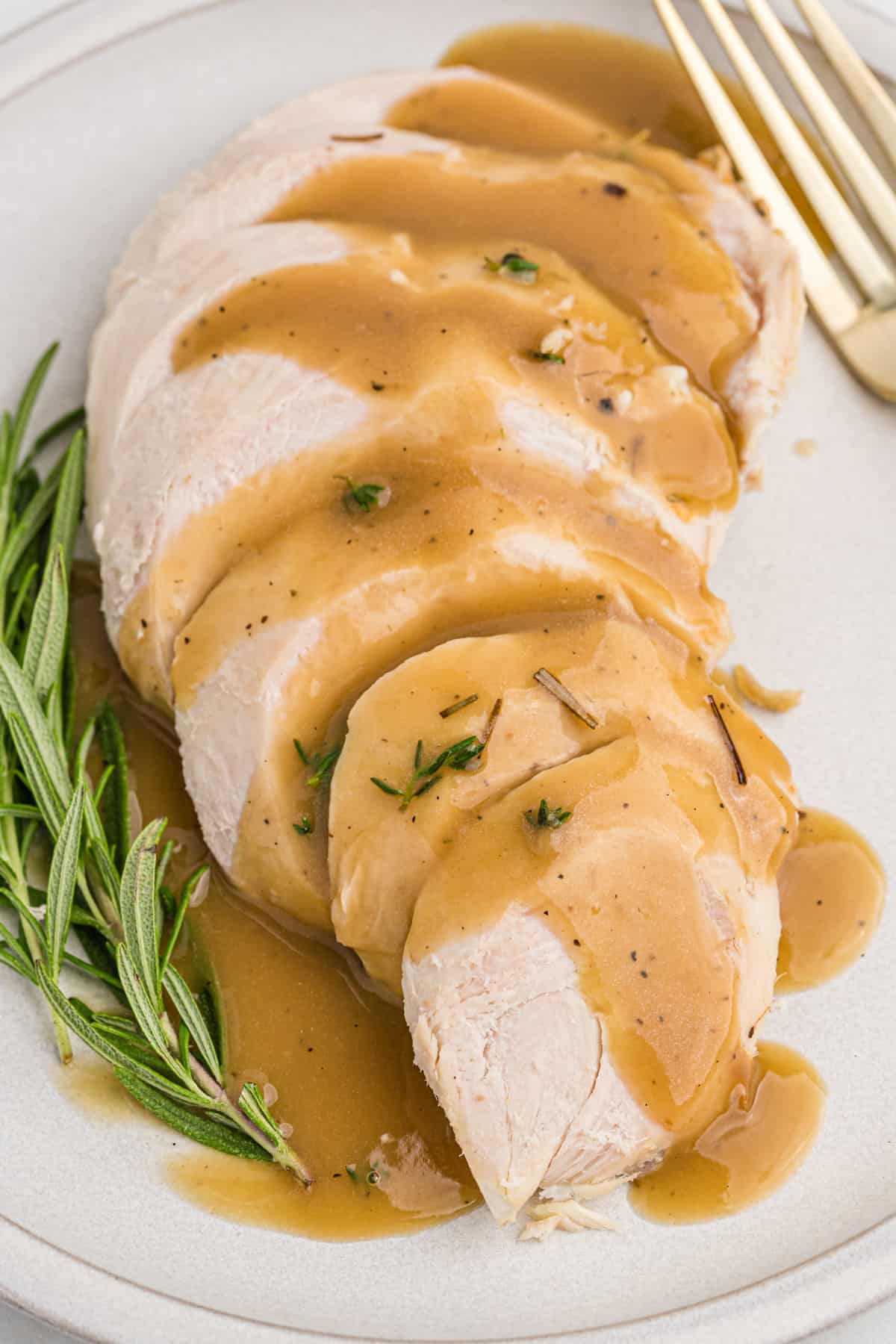
Expert Tips And Tricks from Turkey Gravy from Drippings
- Get the Roux Right!: Whisking thoroughly while adding the flour into the fat is essential. Browning the flour helps deepen the gravy color and flavor, but you don’t want it to burn. Keep that flour moving, y’all!
- Add Liquid Slowly: Make sure you add very slowly while constantly whisking the mixture so it doesn’t get lumpy in the roux.
- Strain to Go Ultra Smooth: You can use a fine-mesh sieve before serving to create a super velvety smooth texture.
How to Store and Reheat
Pop any leftover turkey gravy into an airtight container after it has cooled down completely.
When you want to reheat it, heat it very gently in a pot over low heat. Make sure to whisk it constantly to achieve a smooth consistency once more, adding a little stock if necessary.
How long will it last in the fridge?
It should stay all good in the fridge for up to 4 days.
Can I freeze?
This turkey gravy will store in the freezer for about 2-3 months. Just make sure you label it with the date and pop it in a freezer bag releasing all the air.
Frequently Asked Questions
If you need to prep your gravy in advance, make the whole thing and store it covered in the fridge until you’re ready to serve it, then reheat it the same as above. If you are making it close enough to serving time, keep it warm in a thermos so you don’t have to go through the reheating process.
I prefer using flour y’all. Not only is it possible to brown, which deepens the color and flavor, but it also holds up better for reheating later on.
To darken turkey gravy, cook your roux longer (without burning it). You can also add a dash of browning sauce if you want a deeper color.
You want your gravy to be thick yet still a pourable consistency when you finish. We ain’t making hollandaise here so don’t go too thick. If it gets too thick, just slowly whisk in more stock to thin it out while still being smooth.

Y’all I know that making homemade turkey gravy might seem intimidating but don’t be scared boos. It is seriously so simple. We keep it easy with low-key ingredients and simple steps that will make you a pro in no time. Get into this recipe this holiday season y’all.
More Sauces and Gravies
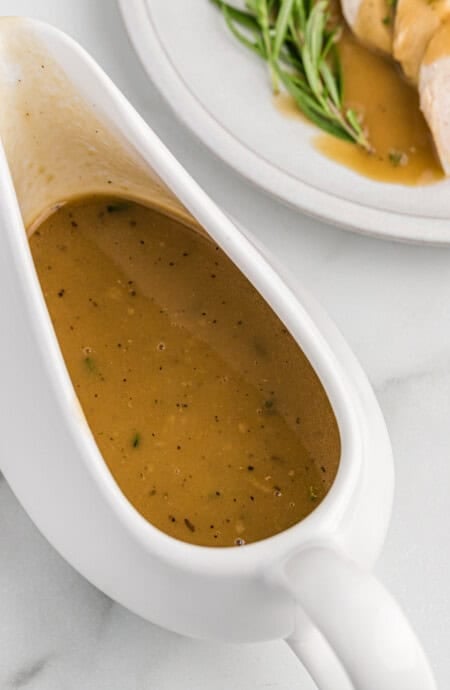
Turkey Gravy
Want to Save This Recipe, Boo?
Ingredients
- 4 tbsp turkey drippings
- 1.5 tbsp all-purpose flour
- 1 cup turkey stock plus more as needed
- 1 tbsp unsalted butter
- Salt and pepper to taste
- Herbs if desired rosemary, thyme
Instructions
- Add drippings to the skillet over medium heat.
- Once heated, whisk in flour combining with drippings and continue to whisk allowing it not to burn but to brown. This should take about 5 minutes or so or until it turns golden brown.
- Whisk in stock and allow it to continue to cook over medium heat to thicken for about 3-4 minutes. Turn off heat and stir in butter. Constantly stir to avoid sticking.
- If it comes out too thick, add more turkey stock 1 tablespoon at a time until it’s thinned to your liking. Add stock slowly. Season with salt and pepper, and serve.
- Whisking thoroughly while adding the flour into the fat is essential. Add in your liquid very slowly and continue to whisk until the roux is completely incorporated and not lumpy.
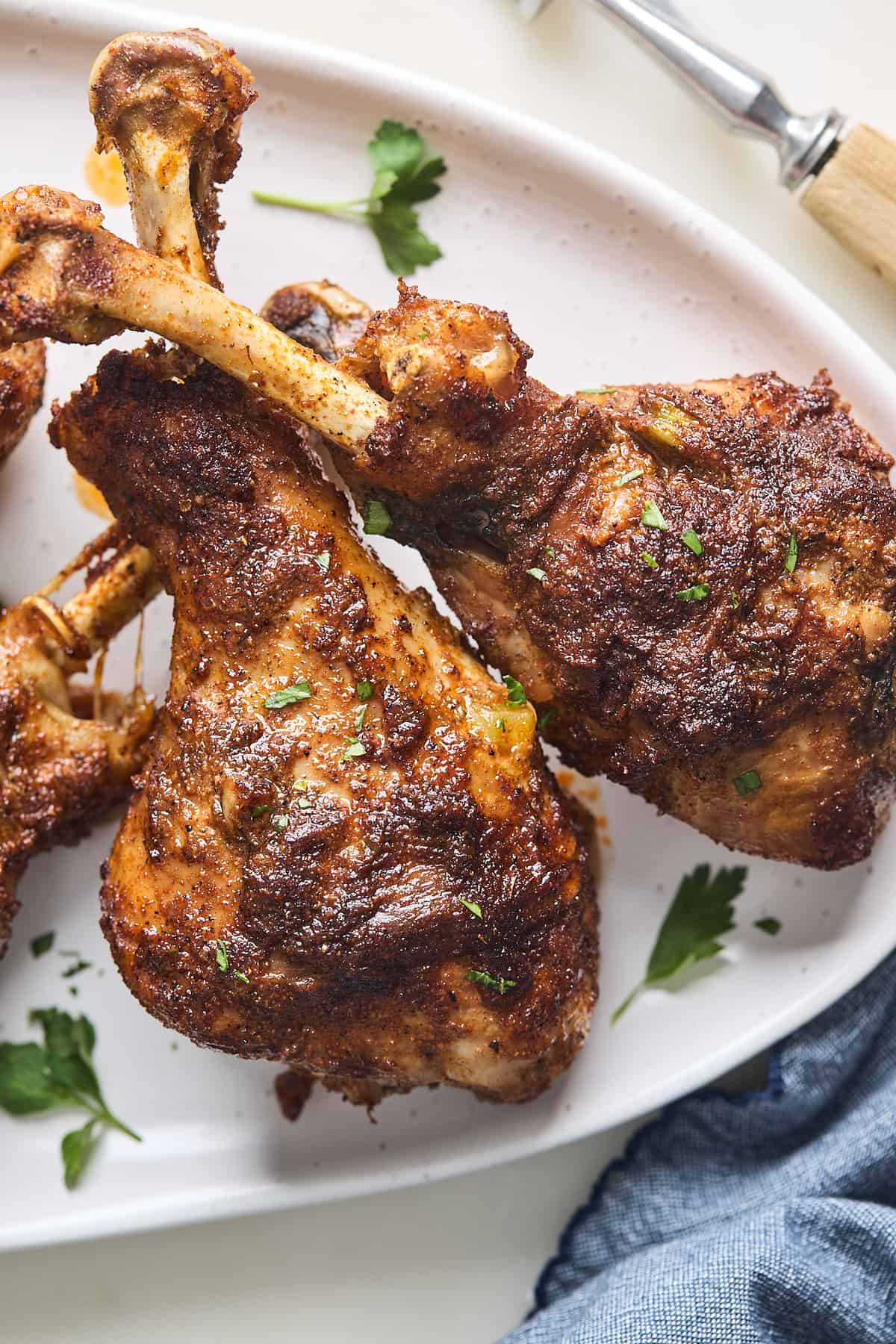
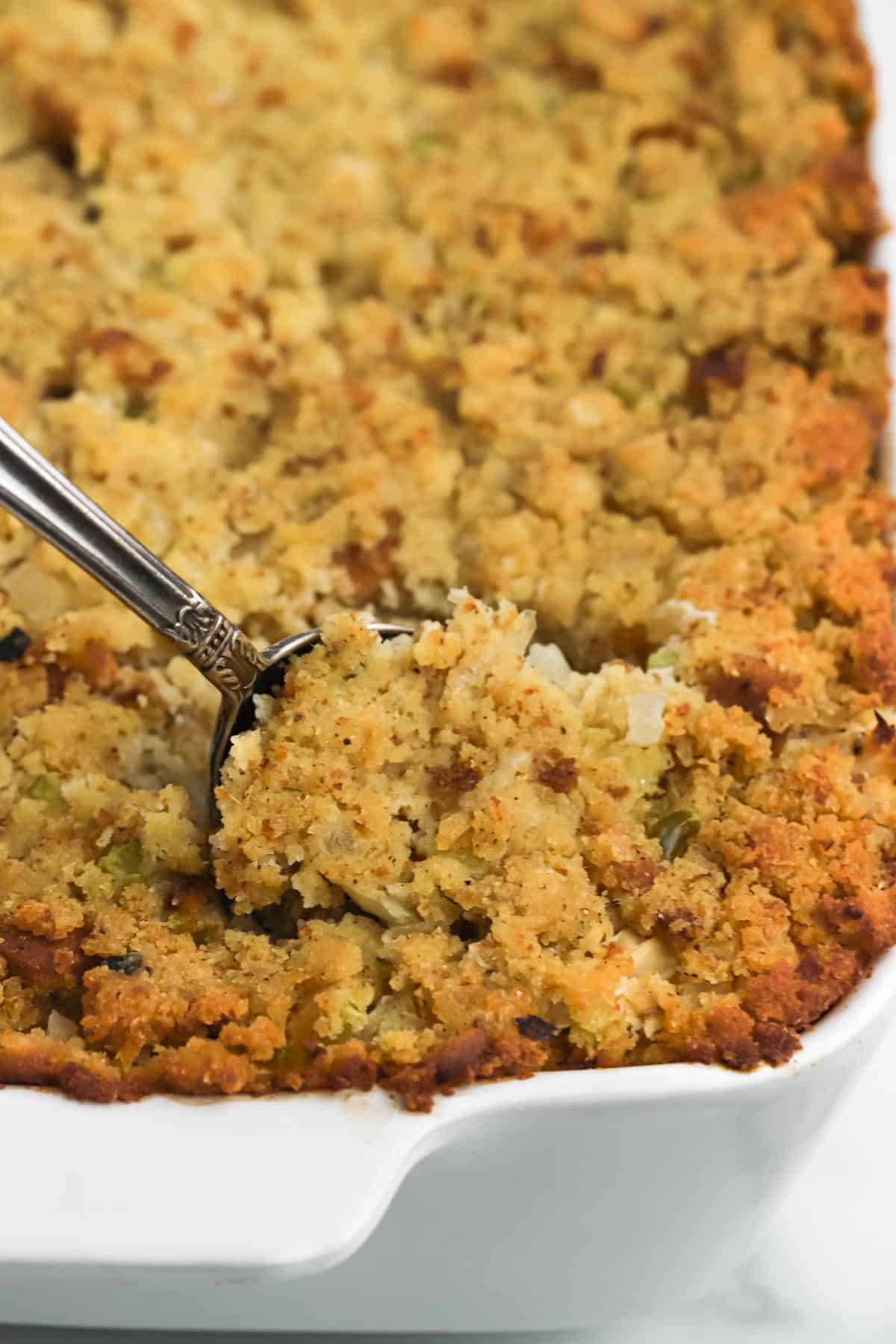
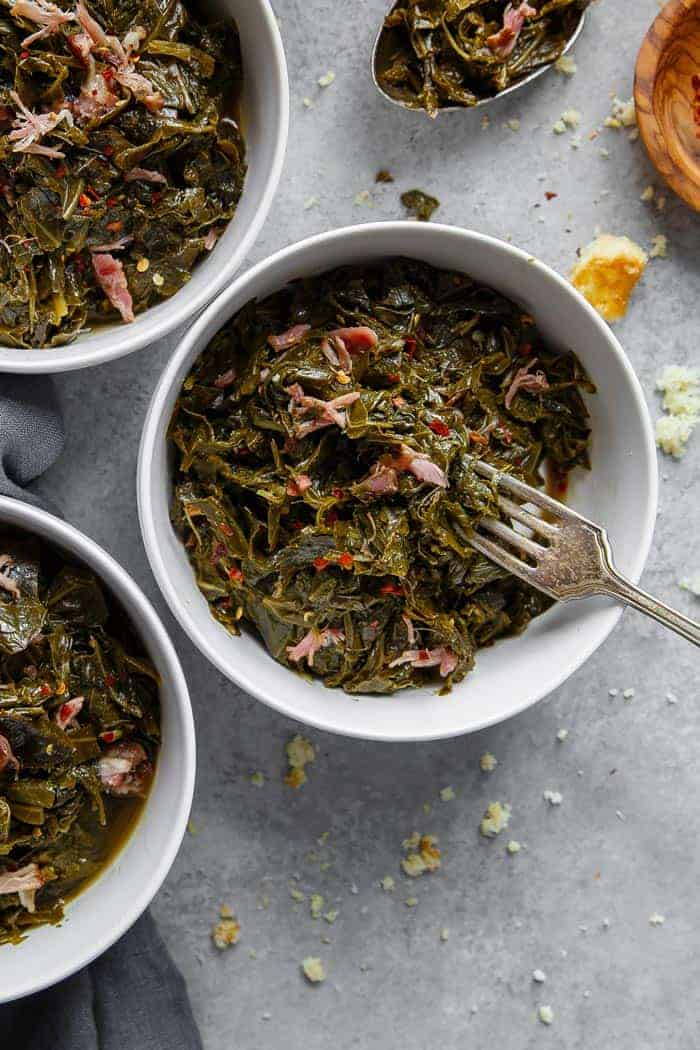
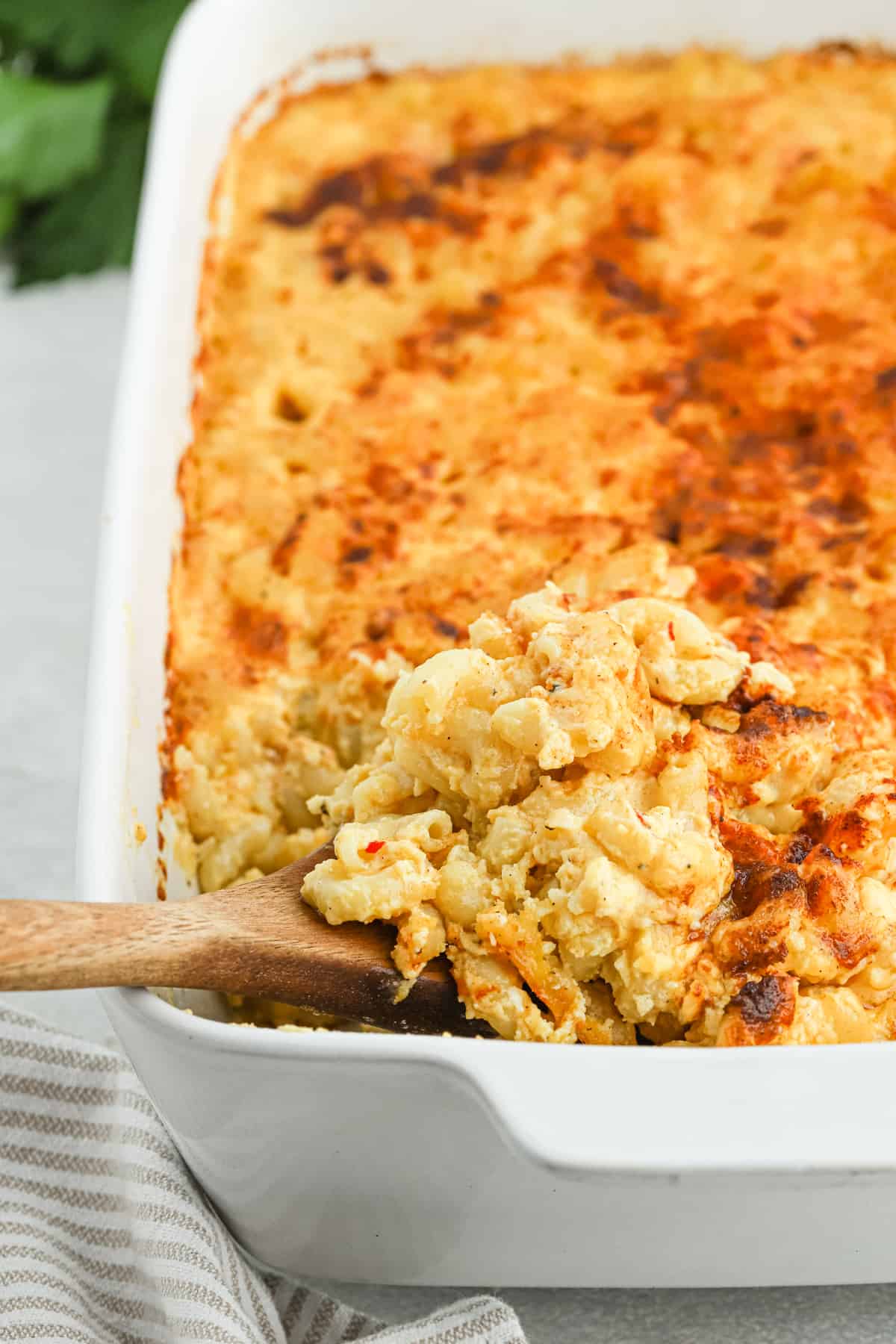
I love the combination of flavors in this turkey gravy. I pinned to make this for the holiday.
This really is the best turkey gravy!
So simple and so delicious! I love cooking turkey breasts all year and will definitely be making this every time!
I love putting gravy on my turkey This version with the fresh herbs sounds amazing. Looking forward to trying it.
My mom makes gravy exactly like this and I’ve always been too nervous to try it myself, but you make it look so, so doable! i can’t wait to give it a try!